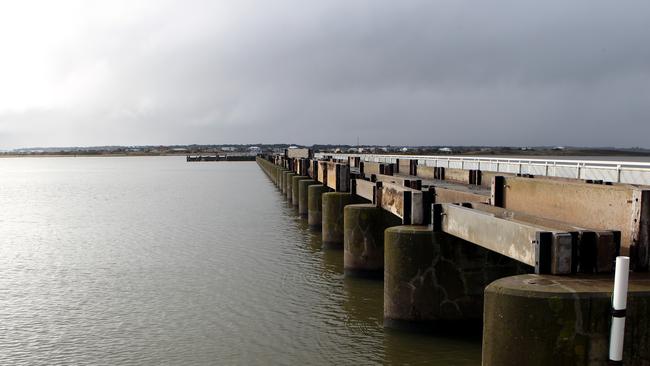Lower lakes barrages reaching end of life: Rebuild or let the sea inundate
South Australia’s lower lakes barrages are reaching the end of their lifespan, but the state government is not developing a strategy to replace them.

South Australia’s lower lakes barrages are reaching the end of their lifespan, but the state government is not developing a strategy to replace them.
The last time the issue was raised was in 2014, when the SA Government released a Climate Change adaptation report for the South Australian Murray-Darling Basin that warned the barrages would need to be replaced, raised and widened to cope with rising sea levels.
“It is understood that the barrages are nearing the end of their design life and that replacement options may need to be considered within one to two decades (2024 to 2034),” the report stated.
“Perhaps of greatest concern though is the possible effect of sea level rise, which could result in more regular saltwater incursions into the Lower Lakes, more persistent marine conditions in the Coorong and, ultimately, regular failure of the barrages.
“This would suggest that sea level rise of at least 0.5m or possibly more will occur within the life of any new structure and should therefore be considered in its design or location.”
The Barrages were constructed from 1935 to 1940 and while operated by SA Water, are jointly owned by the Commonwealth, New South Wales, Victoria, and South Australian governments.
The system of five barrages consists of 593 gates, which stop seawater entering the lower lakes and making its way up the Murray River to Mannum, where Adelaide draws most of its urban water.
To date the SA Government has resisted calls to build a lock zero below Mannum or move Adelaide’s offtake further upstream, as a means of protecting the cities future water supply in the face of rising sea levels.
National Irrigators Council chairman Jeremy Morton said getting the states and Commonwealth to agree on rebuilding the barrages, let alone extending and raising their height would come down to who pays and “what’s practical and achievable”.
“You can’t just stick your head in the sand,” Mr Morton said.
Wentworth Group of Concerned Scientists member Jamie Pittock said “the barrages were nearing the end of their designed life and Australians would need to consider whether to replace them or not.
“There are no easy choices. Ultimately it is a value judgement as to what sort of environments we want in the Coorong and lower lakes.”
“Governments need to take responsibility for facilitating a community debate to try and reach an agreement on what action to take.”
Past research has shown that not only are the barrages at risk, but Ewe and Tauwitchere Islands that form a natural part of the barrier would be regularly inundated by a sea level rise of 0.3 m and completely submerged by a rise of 1.0 m.
The 2014 report found “the entire barrage system may therefore need to be replaced by a single barrier (possibly up to 13 km long from the Mundoo Barrage on Hindmarsh Island to Pelican Point) that would need to be one metre higher than today’s barrages to accommodate sea level rise by the end of the century”.
SA Water refused to outline what action it was taking to facilitate debate on the replacement of the barrages, simply stating “we undertake weekly visual inspections of the barrages”, which demonstrate they “remain fit-for-purpose”.




